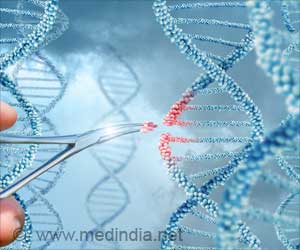Genetically modified zebrafish have been used in a new study to visualize early events involved in development of human atherosclerosis.

The research, led by scientists from the University of California, San Diego School of Medicine, has been published online by the Journal of Clinical Investigation, and will appear in print in the December 1 issue of the journal.
Atherosclerosis is a process of lipid deposition and inflammation in the artery walls. Low-density lipoprotein (LDL) that carries "bad" cholesterol in blood is easily oxidized, and oxidized LDL promotes inflammatory responses by vascular cells. Inflamed atherosclerotic plaque can often rupture; this results in a blood clot, obstruction of blood flow to the heart or brain, and heart attack or stroke.
An international team of researchers led by Yury Miller, MD, PhD, of the UCSD Department of Medicine, working with colleagues in Australia, developed an approach to see – literally – the accumulation of oxidized LDL in genetically modified zebrafish fed a diet high in cholesterol. Because young zebrafish are transparent, the researchers were able to study vascular lipid accumulation, lipid oxidation, and uptake of oxidized LDL by macrophages – all in live animals.
To be able to see oxidized LDL, the researchers inserted a gene encoding an antibody that recognizes oxidized LDL, conjugated with green fluorescent protein (GFP), into the zebrafish genome. The antibody, called IK17, was originally cloned from a patient with severe coronary heart disease by the group of scientists led by Joseph L. Witztum, MD, and Sotirios Tsimikas, MD, also of the UCSD Department of Medicine.
The new gene was silent in zebrafish until their tank water was warmed to 99ºF (37ºC.) After one hour of this "heat shock," IK17-GFP was produced and eventually bound to its target – oxidized LDL in the vascular wall. The green glow of GFP was clearly seen in tiny, live zebrafish under microscope. It was then put back into the fish tank until next picture-taking session.
Advertisement
"I see this cholesterol-fed, transgenic zebrafish model as a novel way to study early vascular lipid accumulation and lipoprotein oxidation, the processes that lead to heart disease in humans," said Miller. "Since it is relatively easy and cost-effective to establish and maintain new transgenic zebrafish lines, this offers an in-vivo test for new antioxidants and other drug candidates that could affect development of human atherosclerosis."














